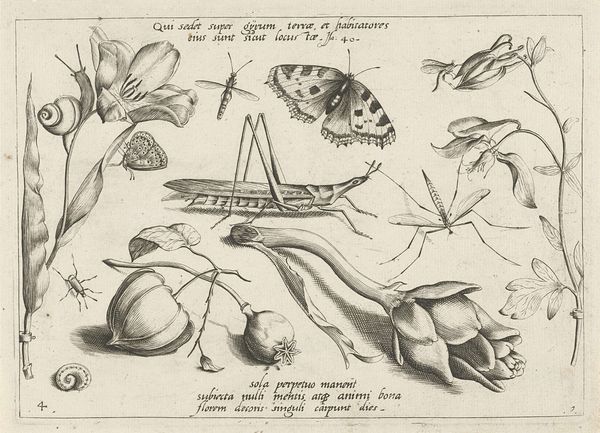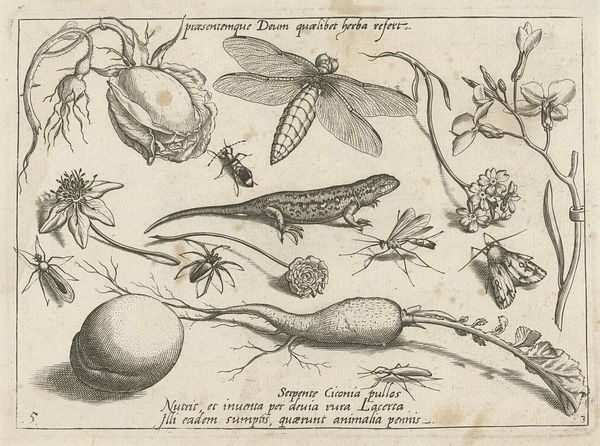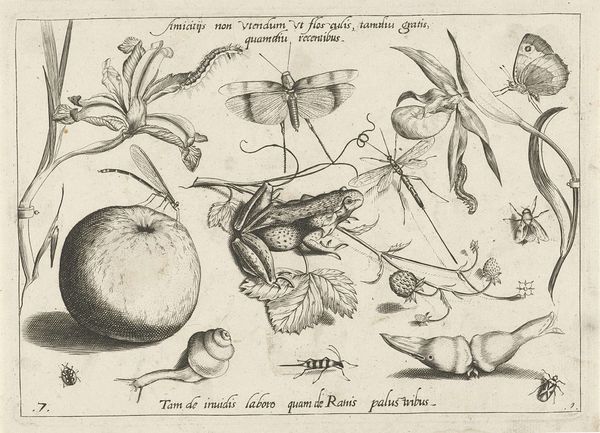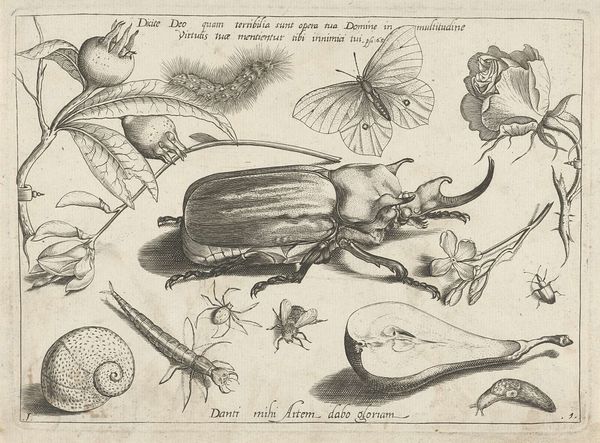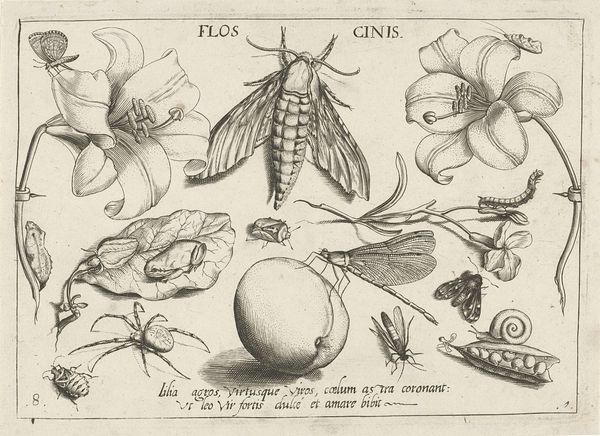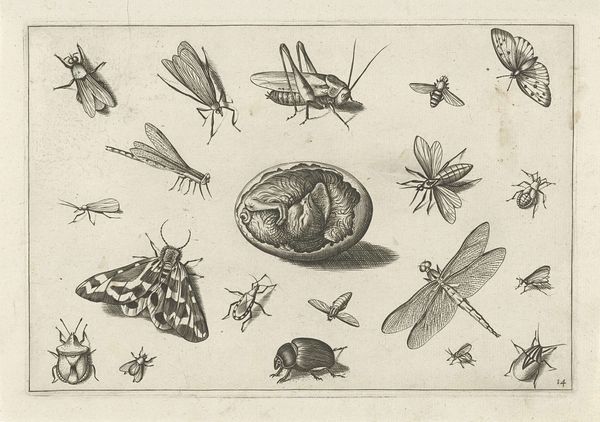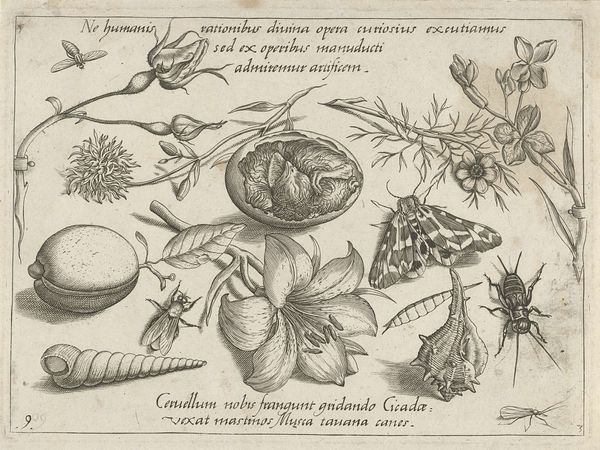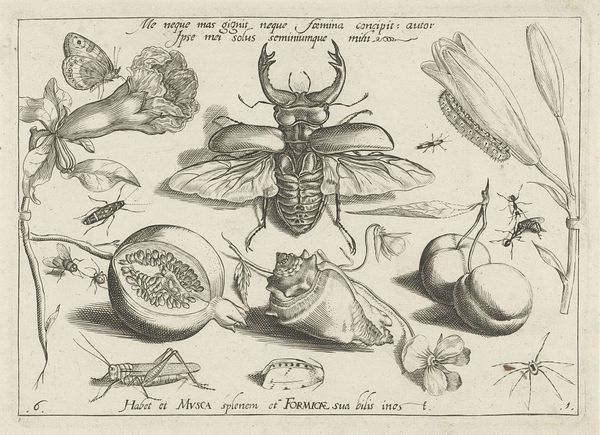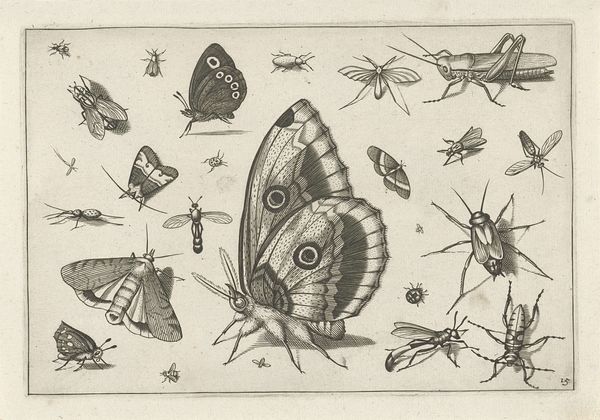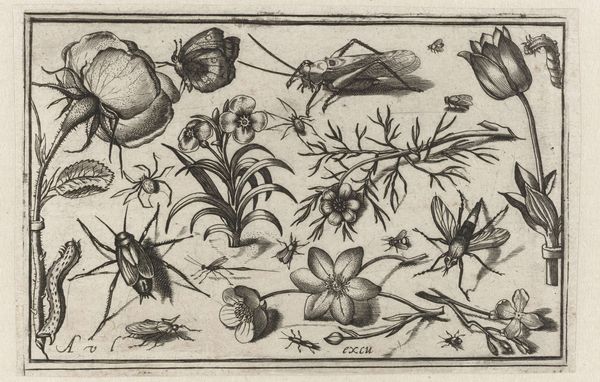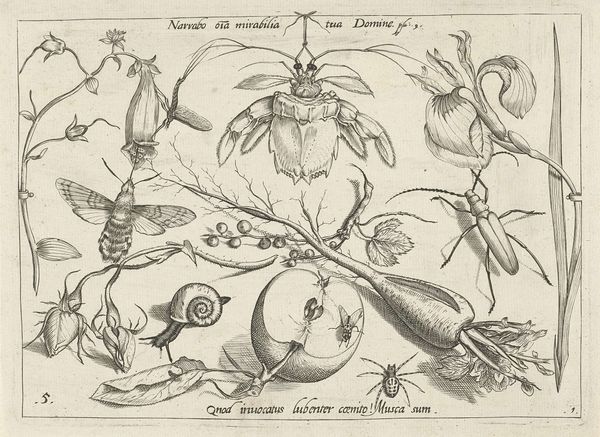
drawing, print, engraving
#
drawing
# print
#
old engraving style
#
figuration
#
11_renaissance
#
northern-renaissance
#
nature
#
engraving
Dimensions: height 153 mm, width 214 mm
Copyright: Rijks Museum: Open Domain
Editor: This is “Dieren, planten en vruchten rond een muis” – "Animals, plants and fruits around a mouse" – an engraving by Jacob Hoefnagel created sometime between 1592 and 1726. I'm immediately drawn to the density of detail, almost like a biological study, yet there's something fanciful about the arrangement. How do you interpret this work? Curator: The engraving reflects a burgeoning interest in the natural world, certainly, but within a very specific social and philosophical context. Do you notice anything about the selection and arrangement of these creatures and plants? What narratives might be embedded here? Editor: Well, I see both predator and prey. The mouse, for instance, is surrounded by insects that it might eat, but also by creatures that might prey on it, like the spider. Is that a conscious commentary on the food chain? Curator: Perhaps. But consider the time it was made. Natural studies during the Renaissance weren’t always objective. They were often allegorical, reflecting ideas about social hierarchy, power, and even moral virtue. Think about it - are there ways the mouse, positioned centrally, could symbolize something more than just a small rodent in a world full of danger? Could this image, filled with the everyday reality of nature, reveal early attitudes toward class and gender roles? Editor: I hadn't considered that! So the image isn't just about nature, but about societal perspectives imposed onto the natural world. I’ll never look at early scientific illustrations the same way again! Curator: Exactly. By exploring these older artworks through the lens of modern intersectional studies, we uncover some interesting and often uncomfortable truths about who we are as a society.
Comments
No comments
Be the first to comment and join the conversation on the ultimate creative platform.
